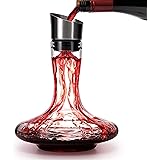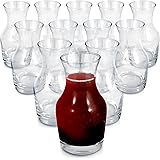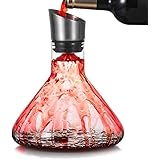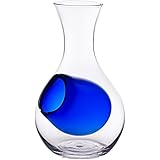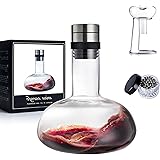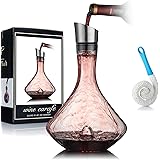While the video above offers an excellent visual primer on the fundamentals of elegant wine pouring etiquette, understanding the ‘why’ behind each technique can truly elevate your service. Mastering the art of serving wine gracefully goes beyond merely transferring liquid from bottle to glass; it’s a critical component of the overall dining experience, contributing to both the guest’s enjoyment and the wine’s presentation. These foundational practices, often seen in fine dining establishments, are equally applicable for the discerning home host looking to refine their hospitality.
Mastering the Art of Wine Service: Beyond Basic Wine Pouring Etiquette
The subtle details of wine service can significantly impact a guest’s perception of a meal and the host’s attention to detail. From the moment the bottle is presented to the final drop poured, every action communicates respect for the wine and the individuals at the table. Moreover, proper technique prevents common mishaps like spills or awkward handling, ensuring a seamless and sophisticated presentation. This guide delves deeper into these nuances, providing an expert perspective on professional wine pouring etiquette.
The Foundational Grip: Elevating Your Wine Bottle Handling
One of the initial points highlighted in the video addresses the correct way to hold a wine bottle. Many amateur servers instinctively grasp the bottle by its shoulder, a habit that, as demonstrated, can severely limit the fluidity of the pour. This high grip restricts the natural movement of the wrist and elbow, leading to an awkward, top-heavy appearance and an increased risk of drips or an uneven pour. Conversely, a more professional approach advocates for holding the bottle closer to its base or lower half, providing a far more stable and controlled leverage point.
Holding the bottle at its lower half, whether with the palm supporting the base or the fingers curled around the lower cylindrical body, offers several advantages. This technique shifts the center of gravity, making the bottle feel lighter and easier to maneuver, especially for standard 750ml bottles or even larger formats like magnums. Moreover, it minimizes heat transfer from your hand to the wine, a crucial factor for temperature-sensitive white wines and rosés. This deliberate grip ensures a steady hand, enabling precise control over the pour and enhancing the overall elegance of the service.
The Unspoken Invitation: Presenting the Wine Label
The video briefly touches upon the importance of showcasing the wine label to your guests, a seemingly minor detail with significant implications for professional wine service. This practice is not merely about aesthetics; it serves as a crucial point of transparency and engagement for the diner. By ensuring the label faces the guest, you confirm the vintage, varietal, and producer that was ordered or discussed, building immediate trust and confidence in the selection.
Moreover, presenting the label acts as a silent invitation for conversation, allowing guests to appreciate the winery and perhaps share their own experiences with that specific bottle or region. In a fine dining setting, a sommelier will typically present the label for approval before opening the bottle, acknowledging the guest’s choice and providing an opportunity for final confirmation. This simple gesture transforms the act of pouring into an interactive and informative ritual, rather than just a mechanical transfer of liquid, elevating the entire experience.
The Sommelier’s Secret: Executing the Flawless Pour and Drip Prevention
Preventing drips is arguably the most challenging aspect of wine pouring, a skill that separates the amateur from the expert. The video correctly highlights the technique of using a napkin and a gentle twist at the end of the pour. This ‘sommelier’s twist’ is not just a flourish; it’s a calculated maneuver designed to break the surface tension of the wine and prevent capillary action from drawing residual drops down the side of the bottle. While the video suggests a paper napkin, professional settings often utilize a neatly folded white linen service napkin, which adds an extra layer of sophistication and absorbency.
To execute the perfect pour, begin by holding the bottle steadily with the label facing the guest, as previously discussed. Pour the wine slowly and deliberately into the center of the glass, ensuring that you fill it to the appropriate level—typically no more than one-third to one-half full for still wines, allowing ample room for aeration and aroma concentration. As you near the desired volume, smoothly rotate the bottle a quarter turn counter-clockwise while simultaneously lifting it slightly, using the napkin to catch any errant drops. This coordinated movement, once mastered, ensures a clean, drip-free finish every single time.
Beyond the Bottle: Holistic Wine Service Considerations
While the physical act of pouring is central to wine service, it exists within a broader ecosystem of hospitality. For instance, the choice of glassware significantly impacts the wine’s aromatic expression and aesthetic appeal, demanding clean, polished, and appropriate varietal-specific glasses. Additionally, understanding proper wine temperatures is paramount; reds often benefit from being served slightly below room temperature (around 60-65°F), whereas whites and rosés typically shine when chilled to between 45-55°F.
Consideration must also be given to the order of service, generally serving white wines before reds, lighter wines before heavier ones, and younger vintages before older, more complex bottles. Moreover, discerning when a wine might benefit from decanting—allowing it to breathe or separating it from sediment—is another hallmark of expert service. These broader considerations, when integrated with flawless pouring technique, transform a simple beverage offering into a curated and memorable experience for every guest, underscoring the true spirit of wine pouring etiquette.


